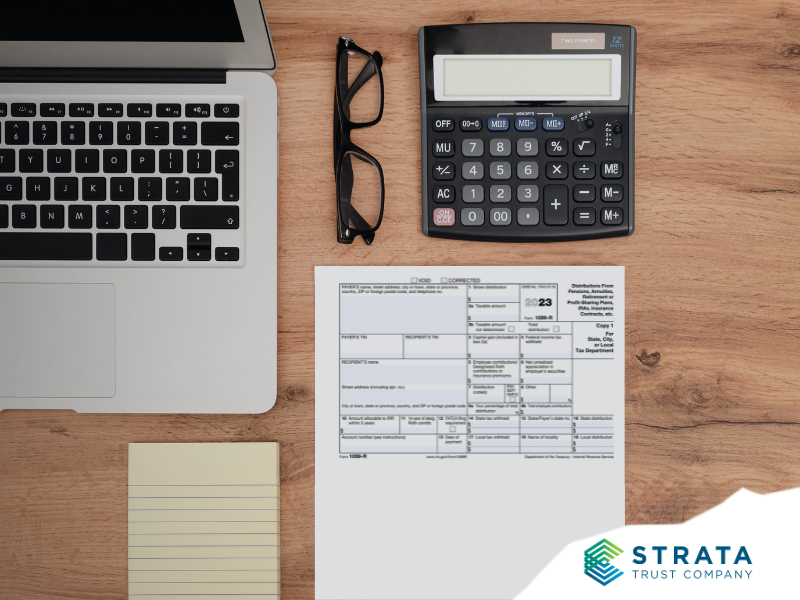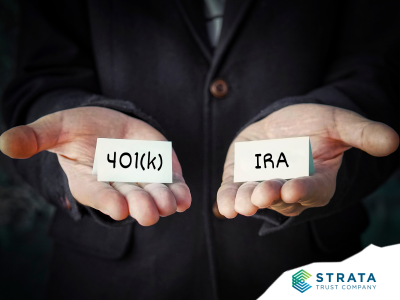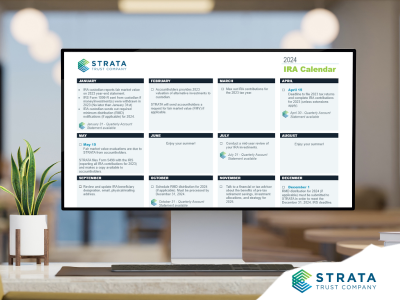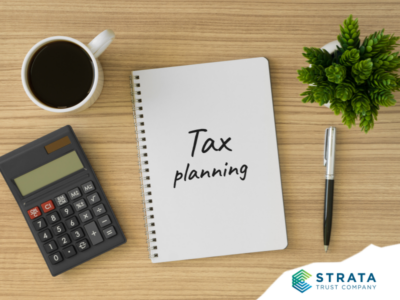If you took a distribution from your self-directed IRA (SDIRA) in 2023, you will receive an important tax form toward the start of 2024. IRS Form 1099-R, Distributions From Pensions, Annuities, Retirement or Profit-Sharing Plans, IRAs, Insurance Contracts, etc. is similar to IRS Form W-2, except that it reports your IRA distributions to the IRS instead of reporting your wages. But the concept is the same—the IRS wants to make sure that you pay any tax that you may be required to pay on your IRA distributions.
Receiving a 1099-R form doesn’t necessarily mean that you owe tax. For example, if you took an IRA distribution that you rolled over within 60 days, this wouldn’t be a taxable event. You still have to account for the distribution on your tax return—but you simply need to tell the IRS that you rolled it over and the IRS will match your return with other reports that show the amount that you rolled over. It is recommended that you address any 1099-Rs that you get with your accountant or tax preparer to avoid any tax surprises later on.
How Are IRAs Taxed?
Here are a few quick reminders about how the IRS uses Form 1099-R to determine your tax.
- Traditional IRA distributions must generally be reported as taxable income, even though IRA custodians don’t know the details. For example, if you have made nondeductible contributions to your IRA, you would normally report this to the IRS on Form 8606. (IRA custodians cannot track such contributions.) If you distribute such after-tax contributions, they aren’t taxable when withdrawn.
- Roth IRA distributions are generally not included in your income—unless you distribute your Roth IRA earnings in a nonqualified distribution. The amount of taxable earnings that are distributed is something that IRA owners must track.
- Taxable IRA distributions may be subject to an additional 10% early distribution penalty if you are under the age of 59½ and do not qualify for a penalty exception. See our article, How to Avoid the Early Distribution Tax for more information.
IRS Form 1099-R: Key Information
Form 1099-R contains important information that will help you prepare your tax return properly. The instructions that come with the form will give you more details.

Box 1 – Gross distribution amount – Reports the total amount distributed from the IRA before any federal or state income taxes were withheld. Traditional IRA withdrawals are typically taxable.
Box 2a – Taxable portion – Reports the amount in box 1 that is taxable. Traditional IRAs usually show the same amount that is in box 1 (unless you have removed an excess IRA contribution); for Roth IRAs this box is usually blank.
Box 2b – Taxable amount not determined – For both Roth and Traditional IRAs, this box is usually marked (but not when earnings are taxed if removing an IRA excess before your tax return due date). Ultimately, taxpayers are responsible for determining the taxable portion of any IRA distribution.
Box 4 – Federal income tax withheld – You want to get credit for any amounts paid to the IRS as a prepayment of tax. So if box 4 contains any withheld amount, include this amount on your income tax return and attach Copy B of the form to your return.
Box 7 – Distribution code – This box tells the IRS the nature of the distribution. For example, was it from a Traditional or Roth IRA? Does a 10% penalty apply? Multiple codes can apply, and IRA custodians do not always know whether certain penalty exceptions may apply. This section should be reviewed carefully in case you have to address the reported code on your tax return.
Below are the more common distribution codes for self-directed IRAs. The “Instructions for Recipient” on your Form 1099-R contain additional code information.
| Code | What It Means | What It Says About Taxation |
| 1 | Traditional IRA owner was younger than age 59½ at time of distribution and 10% tax applies, OR there is no code for the exception the IRA owner meets to the 10% tax (e.g., higher education expenses). | The 10 % early distribution tax may apply |
| 2 | Traditional IRA owner was younger than age 59½ at time of distribution, but it was a direct conversion to a Roth IRA, an IRS levy, or a substantially equal periodic payment. | Exception to 10% early distribution tax |
| 4 | Beneficiary takes a distribution after the death of the Traditional IRA owner | Exception to 10% early distribution tax |
| 7 | IRA owner was age 59½ or older at the time of distribution | No 10% early distribution tax |
| 8 | IRA owner timely distributed an IRA excess contribution made in 2023 | Earnings listed in Box 2a are taxable for 2023 |
| P | IRA owner timely distributed an IRA excess contribution made in 2022 | Earnings listed in Box 2a are taxable for 2022 |
| J | Roth IRA owner was younger than 59½ at the time of distribution and Code Q or T does not apply | The 10% early distribution tax may apply to a portion of the distribution |
| Q | Roth IRA owner met the requirements for a qualified distribution | No tax and no 10% early distribution tax |
| T | Roth IRA owner was older than 59½, deceased, or disabled, but IRA custodian doesn’t know if 5-year rule has been satisfied for a qualified distribution | May be taxable, but the 10% early distribution tax does not apply. |
Next Steps
Please carefully review any information returns you get from your SDIRA custodian. If you think that there is an error on a 1099-R that you received from STRATA, contact us as soon as possible to discuss a possible correction.
For more information on why you may be receiving 1099-R from STRATA and how to view it online, visit our Self-Directed IRA Knowledge Center article: IRS Form 1099-R.









